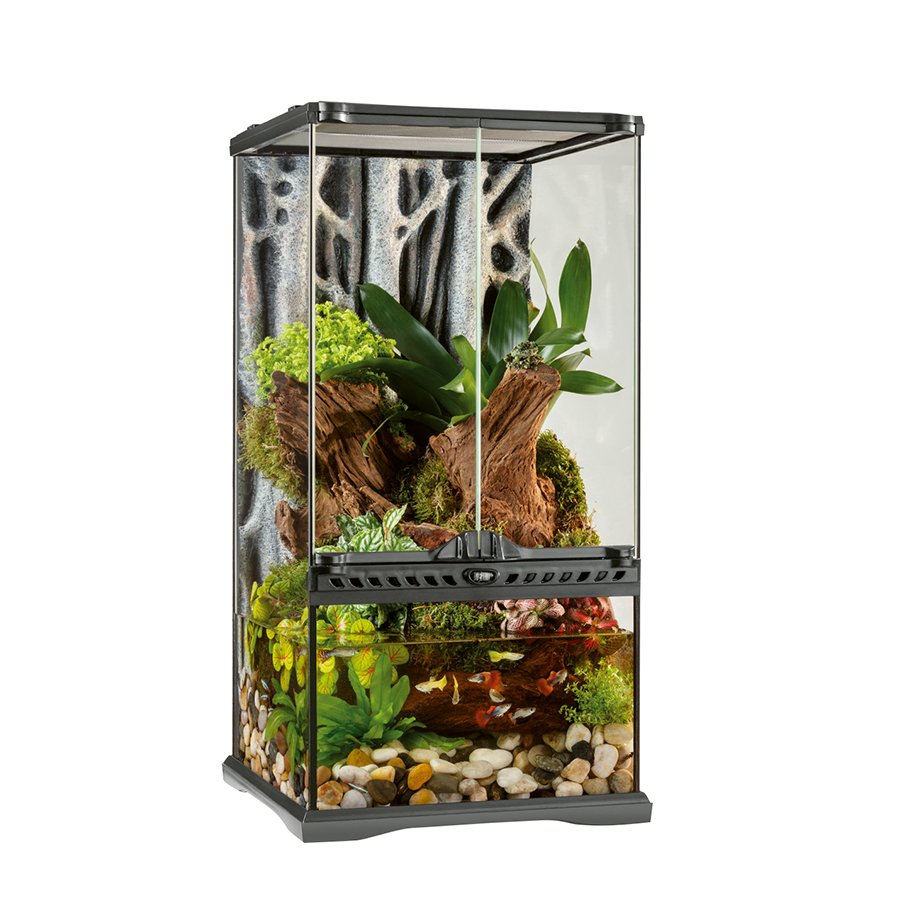
Having some aqua terrarium plants in your aquarium can make your tank look more appealing, but it's important to know what plants will work best for you. You can choose from a number of different species and types.
Mini Club Moss
Unlike aquarium plants, Mini Club Moss do not require a lot of maintenance. It is easy to grow and has a bold green color. You can easily propagate this plant by taking stem cuttings. It is also available in variegated varieties. It is a great ground cover plant for terrariums.
This moss is a great addition to your terrarium. It is an easy plant to care for and offers great coverage for your fish and snails. It also adds color to your water surface.
The soil for this plant should be moist and well-draining. It should also be a minimum of one inch deep to accommodate the root ball of the plant.
Bromeliads
Keeping bromeliads in an aquarium is easy. They have thick leaves, making them look like they have a large surface area. Bromeliads are also able to hold water in their leaves and axials.
They are also an easy plant to grow. You can choose from a variety of different species. They are commonly sold in home and garden stores and online. Most of the time, you'll buy them in pots. This is more for keeping the plant upright than anything else.
Bromeliads can be planted in an aquarium, but the best results come from terrariums. Unlike other plants, bromeliads are able to grow in an arid or moist climate.
Cryptanthus
Whether you have a small fishbowl or a larger aquarium, Cryptanthus aqua terrarium plants are a great addition to any interior. Their low growing nature and ability to thrive in tropical environments makes them ideal for terrariums.
Cryptanthus is a member of the Bromeliaceae family. The genus has over 100 species. They are commonly found in South America, where they grow in rainforest floors. It is best to grow them in a terrarium where there is high humidity. They should also be fertilized.
Cryptanthus can be purchased in many varieties. They are typically grown in small pots with drainage holes. They are adapted to survive under trees in humid climates. Depending on the variety, they require different amounts of light.
Java moss
Generally considered an aquatic plant, Java moss is a popular choice for aqua terrarium plants. This plant can help provide a natural forest effect to your aquarium. In addition to providing shelter for small fish, Java moss can also serve as a carpet for your tank.
Java moss grows in a variety of environments. It can grow in an aquarium, a pond, or even on top of a porous surface such as a piece of driftwood. The growth of this plant can be influenced by the type of lighting you have in your aquarium. The moss may grow more quickly in a more lighted environment.
When planting Java moss in your aquarium, it is important to make sure the moss is in a position that is not too close to the bottom of the tank. Java moss should be trimmed back occasionally to prevent it from getting out of hand.
Selaginella Kraussiana Mini
Unlike most aquatic plants, the Selaginella Kraussiana is not a fish plant. Instead, it is a great choice for terrariums or vivaria. The Selaginella family consists of over 700 species of plants.
Selaginella Kraussiana is a small plant with dense mats of green foliage. It is ideal for enclosed gardens and terrariums. It is also a good choice for shade lovers.
The small plant can be easily grown in moist environments. It is a great choice for beginners. The plant can withstand temperatures from 5-18C.
Selaginella Kraussiana has a beautiful green color and is an attractive ground cover. It is also a good choice for livestock enclosures.
Fittonia Albivenis
Known for its striking foliage, Fittonia Albivenis is a small to medium-sized terrestrial plant that is easy to grow and maintain. The Fittonia is a member of the Acanthaceae family and it is found in Central and South America. It is a relatively low maintenance houseplant that requires consistent moisture and indirect light. It can be easily propagated by rooting stem cuttings.
Fittonias come in all shapes and sizes, but most varieties have unique leaf vein patterns that are both colorful and attractive. Leaf vein patterns can range from red to white.
The Fittonia Albivenis plant has a horizontal, creeping growth pattern that makes it ideal for ground coverage. It's also known for its dramatic behavior when sudden changes in the environment occur. For this reason, it's best kept out of direct sunlight.
